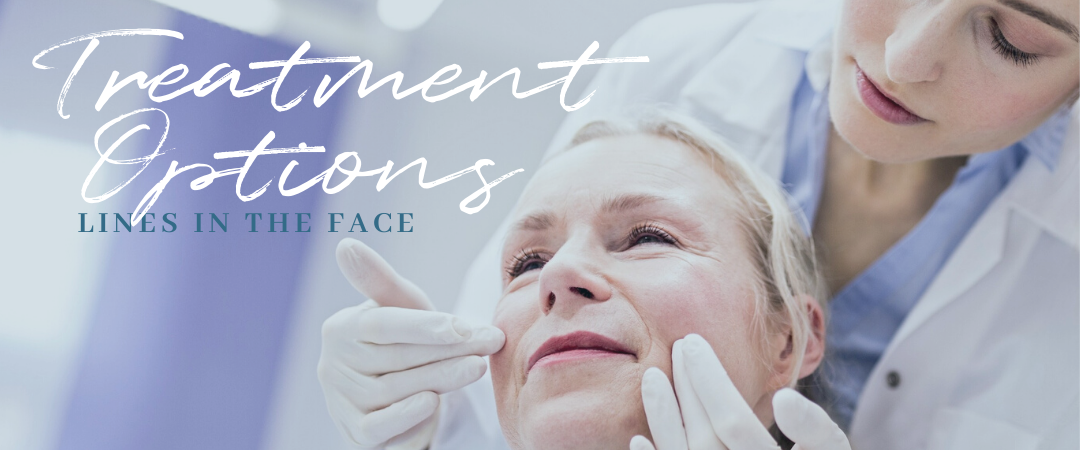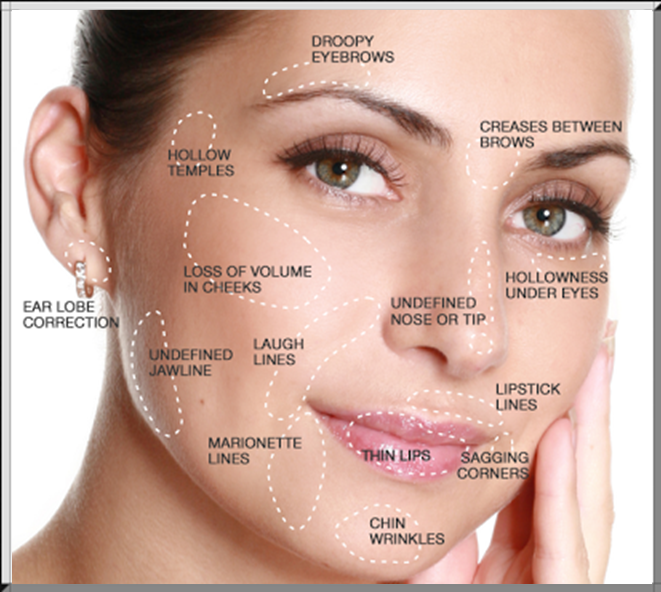
For years, women, and to a lesser extent – men also, have sought a means to treat facial lines and surface depressions with a non-surgical technique. The many products available serve as testimony to the fact that the perfect solution has yet to be discovered.
First of all, it is necessary to differentiate between the surface lines that result of aging or degeneration of the skin from those that result from skin laxity. In the latter case, face lifting remains the treatment of choice, although fillers are being used more and more with varying reports of success.
FAT REPLACEMENT

The current rage for deep filling to replace the loss of subcutaneous tissue resulting from aging is the injection of the patient’s own fat. In spite of the fact that attempts at fat grafting over the years have failed to demonstrate a great deal of long term success, the advent of liposuction has renewed interest in this technique since the fat was being removed anyhow. Small amounts of fat, extracted with liposuction techniques, are reinjected into the subcutaneous tissues to plump up the skin. Proponents claim that the procedure is very technique sensitive, but there is no single technique that is universally recommended. While even the most optimistic reports admit to significant absorption with the need for repeated treatment, the procedure has gained popularity over the past few years.
While our experience at the Facial Plastic & Cosmetic Surgical Center has indicated that most of the transplanted fat is absorbed over a period of time, we still have requests for the procedure.
Zyderm introduced in mid 70s
Zyderm®, a form of injectable collagen derived from cowhide enjoyed wide popularity. While admittedly temporary, it has a very high safety record and is easy to use with little patient discomfort. While some patients are allergic to the material, they can quite effectively be screened out if two successive skin tests are carried out prior to treatment. While the manufacturer’s claim of 6 months duration seems overly optimistic, there are still many patients who choose this form of treatment.
In an effort to reduce the problem of allergy and to increase the effective duration of treatment, a host of alternative injectables ave been introduced over the years. Included in the list are Artecoll®, Hylaform®, Restylane®, Dermalogen®, to mention only a few. Many of these products are still not approved by the Food and Drug Administration and are not generally available in the U.S. None have been widely accepted.
Silicone microdroplet injection therapy
In spite of problems that resulted from injection of large amounts of liquid silicone when used as a tissue filler, the injection of small amounts in a controlled fashion proved to be a very successful and permanent filler. The procedure is technique sensitive and must be used carefully, but years of experience, including our own, demonstrated excellent results with minimal problems. It is very well suited to lip augmentation and soft tissue filling. Small nasal defects can be corrected often avoiding the need for secondary surgery following less than ideal rhinoplasty results.
In 1992, the FDA banned the use of injectable silicone when it stopped the use of silicone gel filled breast implants. Patients requesting treatment besieged surgeons who had been using the material with good results. Recently, the FDA approved the use of injectable silicone for certain cases of retinal detachment. This approval has paved the way for the renewal of microdroplet silicone injection therapy as an off label use of an approved device. This allows patients and their physicians to use their discretion in the use of the device for a purpose not intended by the manufacturer.
One of the most popular uses of silicone microdroplet injections is for lip enlargement. Tiny amounts are injected on a monthly basis until the desired results are obtained. Usually four to eight treatments are required. For additional information see our article on lip augmentation.
Botox®
Injections of Botox® remain popular for the treatment of expressive lines. Like silicone, this represents an off label use of a drug that has been approved for spasmodic facial contractions. While excellent for expressive lines, it does not treat lines that are present at rest and so it is for quite different conditions than those treated by fillers. Botox® injections are commonly used around the eyes, in the forehead, for frown lines between the eyes and, less commonly, for lip lines and neck bands.
Alloderm ®
Alloderm® is a material is processed from human skin which is rendered immunologically inert by removing the antigenic targets that can lead to rejection. Even though the material is made inert, it retains the properties of human dermis. Unlike fat injections or Collagen, both of which are largely absorbed, AlloDerm® appears to remain intact to a significant degree when implanted in the body. While there is some absorbtion, much of the material persists. Unlike other fillers, Alloderm® is not injected but must be surgically implanted. For additional information see our article on lip augmentation.
Resurfacing – laser and other techniques
While fillers offer the prospect of reducing lines without major surgery, their use is limited, as discussed above. Resurfacing with laser treatment remains an excellent choice for those seeking more and longer lasting improvement. As we have gained experience with the use of the carbon dioxide laser, risks are minimized and patients are usually well healed within eight to ten days. Furthermore, the combination of facelifting with laser resurfacing allows us to address all the features of aging with a single combined procedure.
Lighter techniques of resurfacing such as light peels, microdermabrasion and newer less invasive laser techniques are available, but generally offer only temporary improvement. The carbon dioxide laser remains the gold standard for permanent resurfacing.

